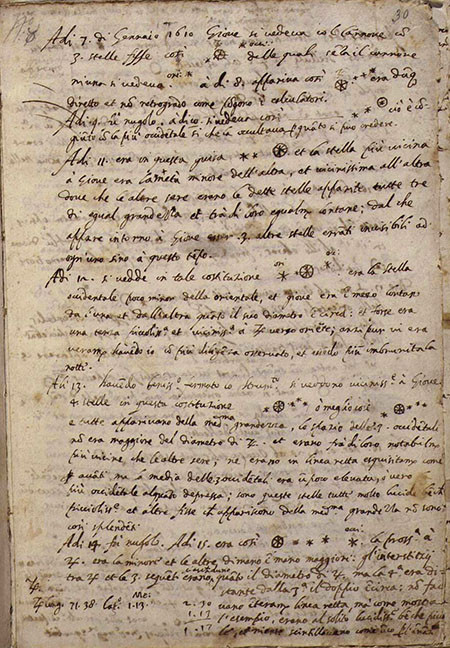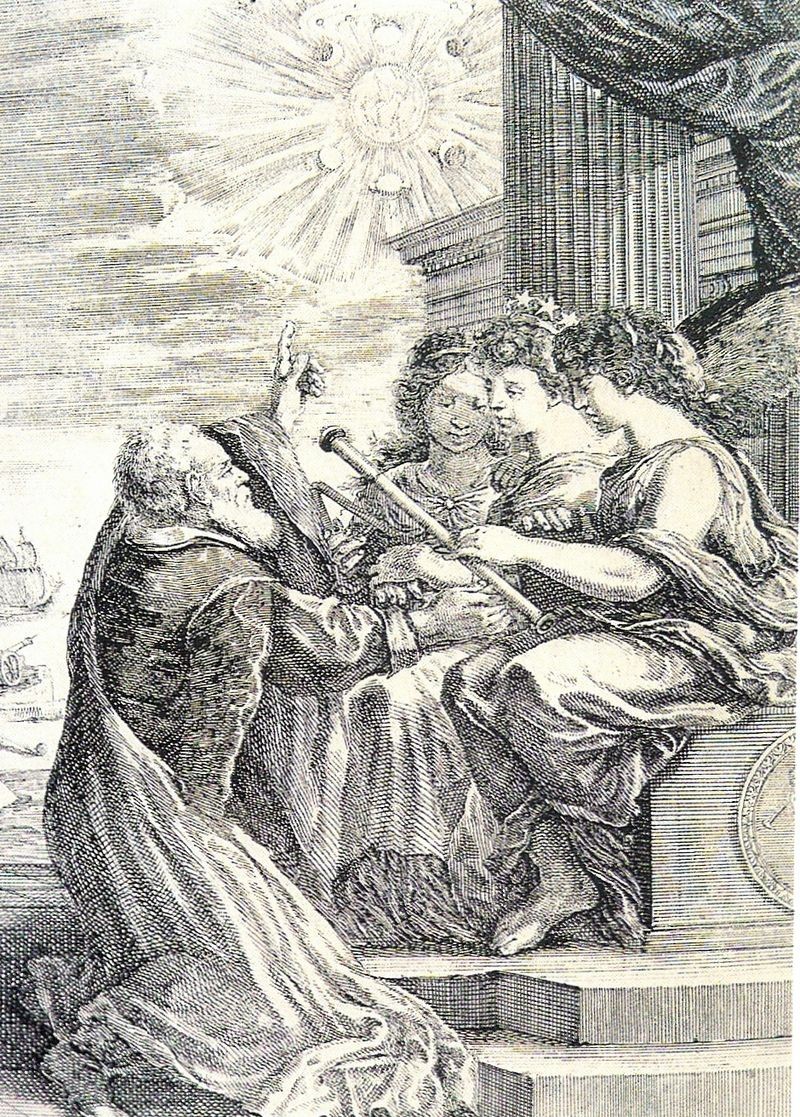Project Gutenberg on Nostr: #OTD in 1610. Galileo Galilei makes his first observation of the 4 Galilean moons: ...
#OTD in 1610. Galileo Galilei makes his first observation of the 4 Galilean moons: Ganymede, Callisto, Io and Europa, although he is not able to distinguish the last two until the following night.
As a result of improvements Galileo made to the telescope, with a magnifying capability of 20×, he was able to see celestial bodies more distinctly than was previously possible. This allowed him to observe in either December 1609 or January 1610 what came to be known as the Galilean moons.
1/


Published at
2024-01-07 11:25:52Event JSON
{
"id": "bec77f9a13e9c91d9ce63b4e6268c3c2defa40d1b2d97e81db043152f5154cab",
"pubkey": "675830674868b40aa5a0704f2d150b4c07658775c20aa65b1e38b13a91469c4b",
"created_at": 1704626752,
"kind": 1,
"tags": [
[
"t",
"otd"
],
[
"proxy",
"https://mastodon.social/users/gutenberg_org/statuses/111714418863810796",
"activitypub"
]
],
"content": "#OTD in 1610. Galileo Galilei makes his first observation of the 4 Galilean moons: Ganymede, Callisto, Io and Europa, although he is not able to distinguish the last two until the following night.\n\nAs a result of improvements Galileo made to the telescope, with a magnifying capability of 20×, he was able to see celestial bodies more distinctly than was previously possible. This allowed him to observe in either December 1609 or January 1610 what came to be known as the Galilean moons. \n\n1/\n\nhttps://files.mastodon.social/media_attachments/files/111/714/387/847/385/565/original/66baa79b129a58b5.jpg\n\nhttps://files.mastodon.social/media_attachments/files/111/714/391/935/735/090/original/7ed4baf27043c37e.jpg",
"sig": "878c025142028a0e7bc6fe79d52812b3b3dc4612156ad5a9c197f167e6c4a1b659f01be48c68faadcce8b498371cbb7cb09943b6898ca6d323913bda2ee75570"
}



